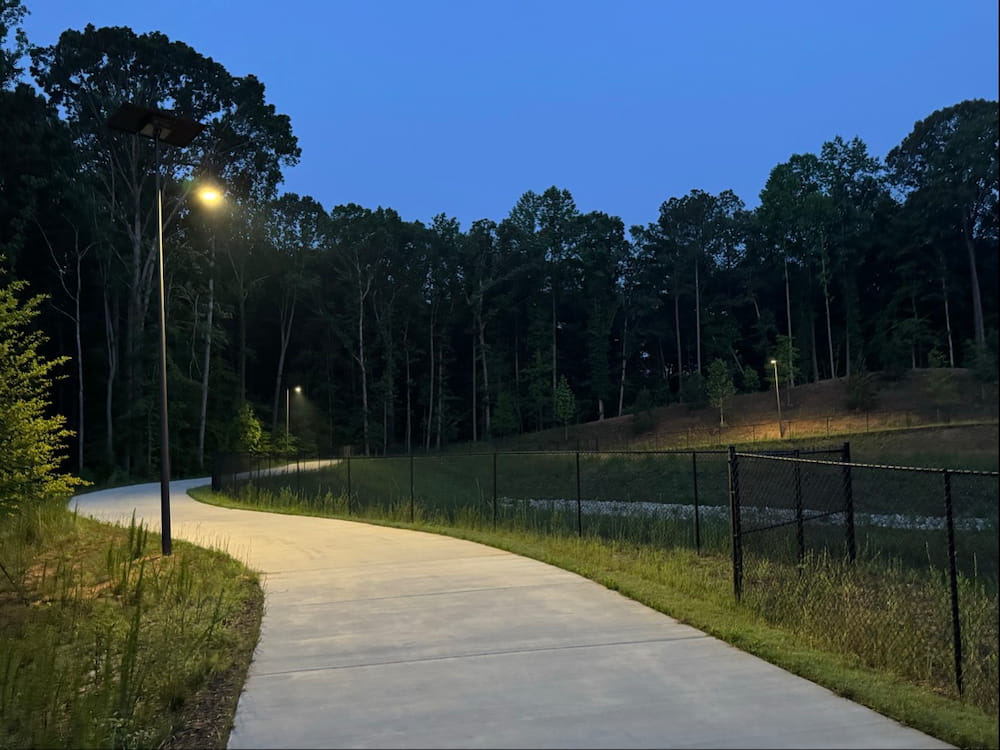Lighting as a Tool for Equity and Access
Public parks play a critical role in community life—but not everyone experiences them equally. In many neighborhoods, especially those historically underserved, public spaces lack the infrastructure that supports safe, inclusive use after dark. The absence of lighting in these areas limits walkability, discourages evening activity, and deepens the divide in access to nature, wellness, and recreation.
Today, a growing number of municipalities are rethinking how lighting can be used not just to illuminate—but to transform. Solar lighting, particularly grid-free systems that require no trenching or wiring, is emerging as a tool for equitable access, safer parks, and resilient infrastructure. When paired with inclusive planning and smart deployment, it helps communities bridge gaps in safety, sustainability, and public trust.
This isn’t just about lights on poles. It’s about creating walkable corridors in every zip code. It’s about lighting the way to opportunity, wellness, and belonging.
Table of Contents
The Uneven Landscape of Public Lighting Access
Across the U.S., park lighting is often distributed along the same lines as historical investment—and historical neglect. Wealthier neighborhoods typically enjoy well-lit pathways, active evening programming, and maintained infrastructure. Meanwhile, lower-income and marginalized communities are left with dark trails, unlit playgrounds, and underused green space after sunset.
This lack of lighting isn’t a matter of preference. It’s a matter of safety, mobility, and equity. Without adequate illumination:
- Families avoid parks after dusk, cutting short playtime, exercise, or social interaction.
- Unlit paths limit walkability and active transportation, especially for those without cars.
- Crime perception increases, even if incidents are low, reducing community trust.
- Public resources go underutilized in neighborhoods that may need them most.
The result is a double burden: fewer opportunities for physical activity and social connection, coupled with higher perceived risk and isolation. Lighting, in this context, becomes more than a utility—it becomes a public health and environmental justice issue.

How Solar Lighting Supports Walkability and Safety
Walkability is more than sidewalks—it’s about comfort, visibility, and the freedom to move through public space at any hour. In parks, trails, and greenways, lighting plays a pivotal role in whether people feel safe walking, cycling, or simply spending time outdoors after dark.
Solar lighting systems—especially those designed for autonomous, infrastructure-grade use—can transform how and when parks are used. By delivering consistent, localized illumination without depending on the electrical grid, these systems:
- Enhance visibility on walking paths, play areas, and gathering spaces.
- Support active use of trails and fitness equipment in early morning or evening hours.
- Create safer conditions for pedestrians, cyclists, and transit users near park corridors.
- Encourage inclusive programming, such as community movie nights, sports leagues, or food truck events.
Even more importantly, solar lighting is not impacted by outages, which disproportionately affect communities with older, less reliable infrastructure. Whether during a storm, power failure, or rolling blackout, grid-free lighting ensures that parks remain safe and usable—providing resilience when it’s needed most.
Fonroche’s approach to off-grid lighting ensures that each system is designed for long-term performance, with smart controls, durable components, and adaptive lighting profiles that match the needs of the space. These systems have been deployed in underserved neighborhoods, tribal parks, and high-traffic urban trails alike—ensuring lighting equity without adding utility strain or permitting delays.
Many municipalities now include lighting in their definitions of “essential infrastructure” for parks. When deployed thoughtfully, solar systems can meet illumination standards for:
- ADA-compliant pedestrian pathways
- Bike lanes and shared-use trails
- Emergency access routes
- School or transit connections through green space
For cities working toward safer, more walkable communities, solar pathway lighting offers a practical way to extend access—without waiting for utility approvals or digging through red tape (or pavement).
A Resilient, Climate-Ready Alternative to the Grid
As cities face rising climate risks and aging infrastructure, resilience is no longer optional—it’s foundational. Parks are increasingly viewed as frontline assets in climate adaptation strategies, offering not only green space but stormwater retention, cooling, and emergency gathering zones. Lighting these spaces reliably—without depending on overburdened power infrastructure—is essential.
That’s where Fonroche solar lighting systems provide a clear advantage. Engineered for autonomy, each system includes high-efficiency solar panels, recyclable NiMH batteries, and a smart energy management platform known as Power 365. The result: uninterrupted illumination, 365 nights a year, with no grid connection required.
In resilience planning scenarios—from hurricane-prone coastal cities to wildfire-affected regions—Fonroche systems remain operational when grid-tied lights fail. During outages, parks equipped with solar pathway lighting can continue serving as safe corridors for pedestrians, staging areas for first responders, or places of refuge for community members.
Additional climate-ready benefits include:
- Zero-emissions operation, contributing to municipal decarbonization goals
- No trenching or cabling, avoiding disruption to tree roots, sensitive soils, or stormwater systems
- Remote monitoring and diagnostics through Fonroche Connect, reducing maintenance trips and improving response time

Lighting the Way to Inclusive Public Spaces
Lighting alone can’t solve every challenge facing public parks—but it’s a powerful place to start. It makes walking safer. It extends access to green space after sunset. It signals investment in neighborhoods that have long gone without. And when that lighting is delivered through resilient, maintenance-free solar systems, it becomes a tool for equity—not just efficiency.
Ready to explore solar lighting solutions for your parks and trails? Connect with Fonroche Lighting America to discover how grid-free lighting can support your community’s goals for safety, equity, and climate resilience.

